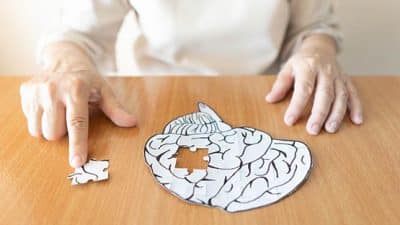
My evaluation starts with:
Reason for Referral and Background Information: States reason for “why” they need one. Mine happens to be memory loss, misperceptions of events, brainstem strokes, seizures, vocal and motor tics, headaches and dizziness. Here’s another sentence about me having vision loss and fatigued that has to serve a purpose. I do experience “clonus” as well as spasticity. Cognitive issues and current memory loss are mentioned.
So the first part is why I am there for the evaluation. See, does not hurt unless you want to conceal issues and that would be counterproductive.
Medical History: Brings about a clear picture of what has transpired to bring about this visit. It lists my strokes and severe vascular disease. It also lists my current medications and dosages
Psychiatric Substance Use history: Not too painful physically. If you had even thought of suicidal type scenarios tell him. He shall ask. Be truthful for everyone’s good. I do not currently use any illicit drugs or smoke. I do not consume alcohol either. All of my current meds forbid the use of such.
Family/Social History: This reached deep into my soul and was difficult revealing. The edgy and jumpy that includes tolerating situations and environments was the easy part to reveal. This has been ongoing since my First 2 Brainstem strokes in 2006. Then I believe it hits the root of my issues with the reveal of “physical abuse” during my preteen years by a family adult. This has been in and out of reminders dealing with myself for years. Reveal it to the Doctor. Don’t think it will go away and it has no effect on your future life. It goes on to my education and GPA.
Methods of Assessment: Clinical Interview, Review Medical Records, Oral Word Association, Finger oscillation Test, Halstead Category Test, Hooper Visual Organization Test, North American Adult Reading Test, Personality Assessment Inventory, Rey Auditory Verbal Learning Test, Rey Complex Figure test, Trailmaking Test(Parts A and B), Wechsler Abbreviated Scale of Intelligence(WASI).
Behavioral Observations: This is what he sees while interviewing you. If you believe in Spirits, you might have some issues as you are dealing with a man of science. Motor tics and verbal tics are noted on the copy. I had some whoppers that day.
Test Findings
Intellectual Functioning: Well it’s nice to start off with a plus after revealing your abuse over 49 years ago. My Full scale IQ score is 122. This has not changed since 2006. All prior intelligence tests remain the same as 2006. Now here is a new medical term for me and I shall explain it. I was scored on a NAART. This is an estimate of premorbid intellectual efficiency. I had an estimate of full scale. Now premorbid was an ominous word for me. So let’s see what this means.
According to:
http://ajp.psychiatryonline.org/cgi/content/abstract/154/2/165
I had to read the bottom of this article where it spoke “English” for the common man. CONCLUSIONS: The results suggest that higher levels of premorbid ability are associated with greater pathophysiological effects of Alzheimer’s disease among patients of similar dementia severity levels. These findings provide support for a cognitive reserve that can alter the clinical expression of dementia and influence the neurophysiological heterogeneity observed in Alzheimer’s disease. So I guess I am a fish because I have full scales. Glub,Glub Sponge Bob.
Attention/Concentration: No changes since 2006. Now this is after my initial strokes. Is this bad or good? I’ll take no changes.
Visuospatial Functions: I have a segmented and inefficient constructional approach. In other words, I did the task but went about it the wrong way. My life story revealed for sure even before strokes. I can draw a clock. Tick-tock away.
Reasoning/Cognitive Flexibility: This measures performance on visual reasoning. I passed something.
Motor Functions: My dominant hand was above the average person. Reminds me of Yogi Bear, I’m faster than the average bear eh Boo-Boo. My left hand which is my affected side was a total reveal. I received a low average that being no surprise.
Language Functions: Verbal fluency solidly average. Thanks to Woodrow Wilson Rehab, as I was at ground zero when I had my strokes in 2006.
Learning and Memory: Immediate recall of noncontextual auditory/verbal information was low average. My visual memory with complex geometrical designs was severely impaired at both recall conditions. What can I say? Yikes comes to mind…
Personality/Emotional Functioning: The only reason I write is to provide my readers with up front information. This is why I promised to help others although it is difficult for me to “open” myself as to what goes on after a stroke to many.
I responded to items on the PAI in an open and honest manner sufficient to yield a profile of scores. The advantage of the PAI is that it assesses a broad range of psychological conditions, including anxiety, depression, mania, schizophrenia and some character logical disorders. It also has three normative samples including a census matched community sample, a psychiatric patient sample, and a college sample, which provides a broad basis for comparison. It also has four validity measures. The PAI subscales do seem to be especially useful for more detailed analysis.
All right here we go; I harbor significant concerns about thinking and concentration as well as somatic and physical health concerns. My test reveals some degree of manic symptomology and a significant depressive experience. It reveals I get involved in various activities in a disorganized fashion. Oh how true this is and I have hurt too many people who care about me.
This part also discovered that my suppression of childhood events carried on through my adult life. So there were things already present and all of my medical issues were a toxic mix of chemicals.
Summary Impression: I feel this is akin of an evaluation at work. You sprinkle in the good parts of the test then slammed on the bad. I should say “informed” as it is for my good, but still feel exposed. I am basically warranted for psychiatric consultation and psychotherapeutic “monitoring”.
Diagnosis Consideration: There are three considerations named Axis 1 through 3.
http://quizlet.com/5960525/axis-i-through-axis-v-global-assessment-functioning-gafscale-flash-cards/
Ruled out was being Bipolar.
Axis III was severe cerebrovascular disease.
He has made a request to my neurologist for medical intervention immediately. So my readers, there I lie exposed for you to see. I want to bring hope and understanding to those scared to see or request and evaluation. After you are evaluated with no lies…repeat no lies, you shall actually see yourself as you are or seen by others. Get the help you need. Try folks, never give up. Next article will be what transpires next.
Column by Chris DeWald










